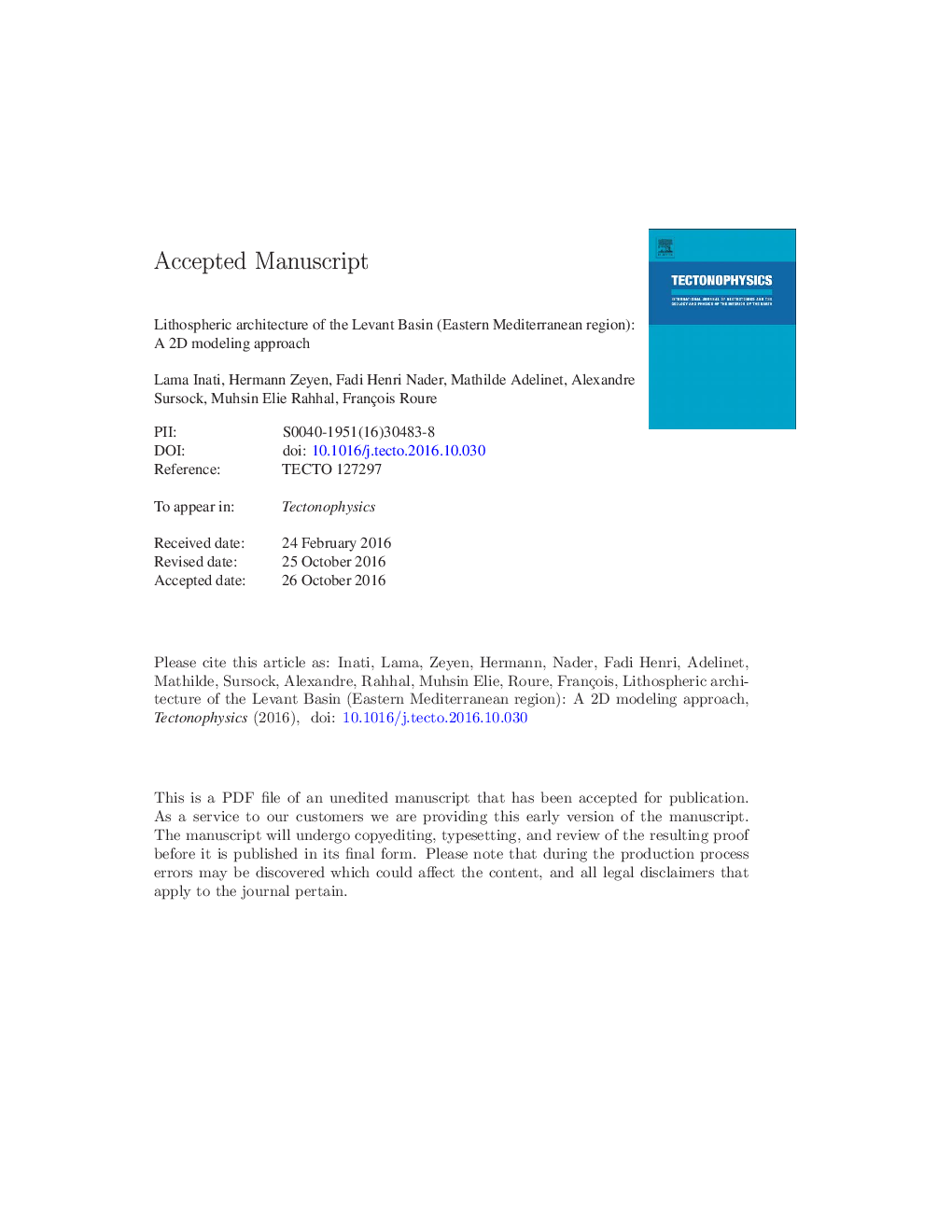| Article ID | Journal | Published Year | Pages | File Type |
|---|---|---|---|---|
| 5781873 | Tectonophysics | 2016 | 27 Pages |
Abstract
This paper discusses the deep structure of the lithosphere underlying the easternmost Mediterranean region, in particular the Levant Basin and its margins, where the nature of the crust, continental versus oceanic, remains debated. Crustal thickness and the depth of the lithosphere-asthenosphere boundary (LAB) as well as the crustal density distribution were calculated by integrating surface heat flow data, free-air gravity anomaly, geoid and topography. Accordingly, two-dimensional, lithospheric models of the study area are discussed, demonstrating the presence of a progressively attenuated crystalline crust from E to W (average thickness from 35 to 8Â km). The crystalline crust is best interpreted as a strongly thinned continental crust under the Levant Basin, represented by two distinct components, an upper and a lower crust. Further to the west, the Herodotus Basin is believed to be underlain by an oceanic crust, with a thickness between 6 and 10Â km. The Moho under the Arabian Plate is 35-40Â km deep and becomes shallower towards the Mediterranean coast. It appears to be situated at depths ranging between 20 and 23Â km below the Levant Basin and 26Â km beneath the Herodotus Basin, based on our proposed models. At the Levantine margin, the thinning of the crust in the transitional domain between the onshore and the offshore is gradual, indicating successive extensional regimes that did not reach the beak up stage. In addition, the depth to LAB is around 120Â km under the Arabian and the Eurasian Plates, 150Â km under the Levant Basin, and it plunges to 180Â km under the Herodotus Basin. This study shows that detailed 2D lithosphere modeling using integrated geophysical data can help understand the mechanisms responsible for the modelled lithospheric architecture when constrained with geological findings.
Related Topics
Physical Sciences and Engineering
Earth and Planetary Sciences
Earth-Surface Processes
Authors
Lama Inati, Hermann Zeyen, Fadi Henri Nader, Mathilde Adelinet, Alexandre Sursock, Muhsin Elie Rahhal, François Roure,
